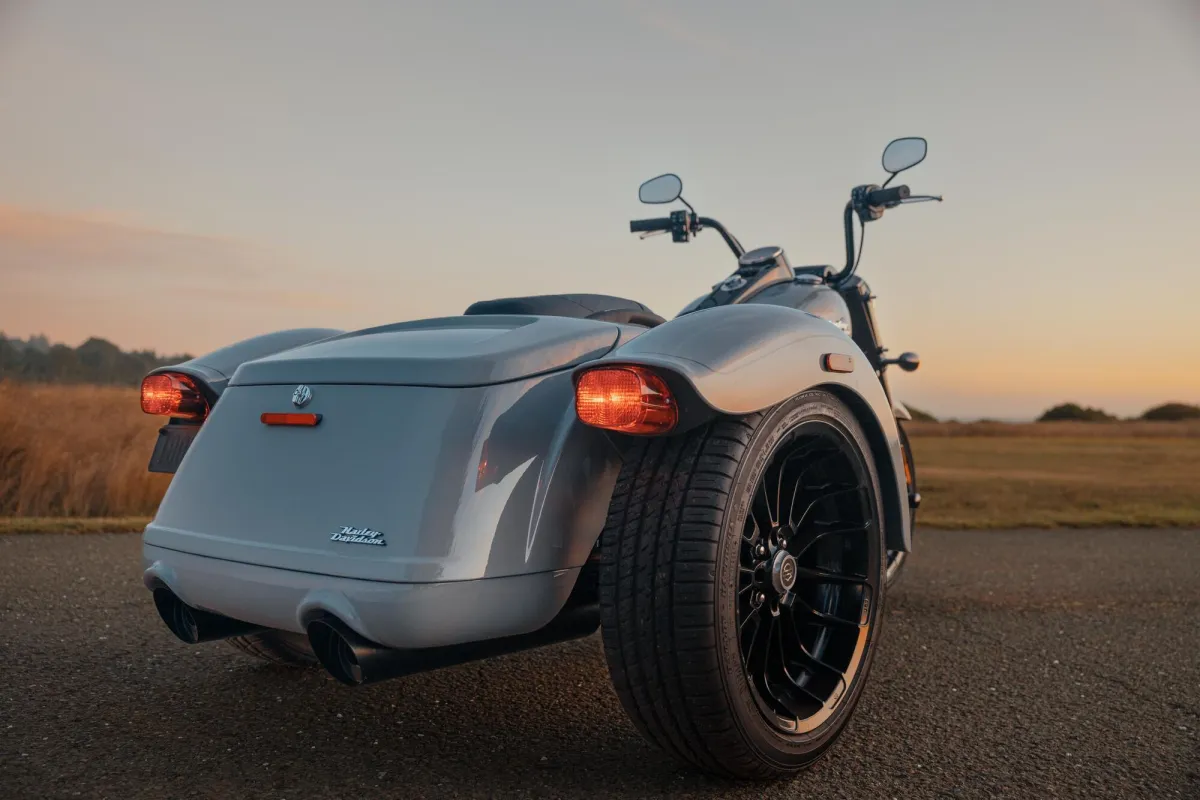Caliente Harley-Davidson Blog

How Harley-Davidson Changed the Motorcycle Industry
How Harley-Davidson Changed the Motorcycle Industry
Harley-Davidson, founded in 1903 in Milwaukee, Wisconsin, by William S. Harley and the Davidson brothers, Arthur, Walter, and William A., is not just a motorcycle manufacturer—it’s a cultural phenomenon. Over the past century, Harley-Davidson has not only shaped the motorcycle industry but also influenced the broader landscape of American culture. From pioneering engineering innovations to fostering a loyal community of riders, Harley-Davidson’s impact on the motorcycle industry is profound and enduring. Here’s how Harley-Davidson changed the motorcycle world forever.
1. Pioneering V-Twin Engine Design
Harley-Davidson’s introduction of the V-Twin engine in 1909 was a groundbreaking moment that set the company apart from other motorcycle manufacturers. The V-Twin design offered more power and a distinctive exhaust note that became synonymous with the brand. Over the decades, Harley continued to innovate with iconic engines like the Knucklehead, Panhead, Shovelhead, Evolution, and Milwaukee-Eight, each contributing to the company's reputation for power, durability, and that unmistakable "potato-potato" sound.
Impact on the Industry:
Established the V-Twin as the defining engine layout for cruisers and touring motorcycles.
Set new benchmarks for power and performance that competitors sought to match.
Created an engine sound and feel that became iconic, turning the engine itself into a symbol of the brand.
2. Redefining Motorcycle Culture and Lifestyle
Harley-Davidson didn’t just build motorcycles; it built a lifestyle. From the 1940s onward, the company’s image became closely tied to freedom, rebellion, and the open road, thanks in part to Hollywood movies like "The Wild One" and "Easy Rider." This cultural association helped Harley-Davidson transcend its role as a manufacturer, positioning it as a symbol of independence and counterculture.
Impact on the Industry:
Fostered a distinct motorcycle culture that emphasized brotherhood, individuality, and freedom.
Influenced countless movies, music, and fashion, making motorcycles a cultural icon.
Inspired other brands to market motorcycles not just as vehicles, but as lifestyle products.
3. Creating the Customization Craze
Harley-Davidson motorcycles are renowned for their potential for customization. From the early choppers of the 1960s to modern-day custom builds, Harley’s platform has always encouraged riders to make their bikes uniquely theirs. The company embraced this trend by offering an extensive range of aftermarket parts and accessories, allowing riders to personalize their motorcycles with ease.
Impact on the Industry:
Popularized the custom motorcycle scene, inspiring a global community of custom builders and enthusiasts.
Pioneered the aftermarket parts industry, creating new business opportunities and driving innovation.
Encouraged other manufacturers to offer customizable models, leading to the diverse array of styles seen today.
4. Revolutionizing Motorcycle Design with the Softail and Touring Platforms
Harley-Davidson’s Softail and Touring platforms revolutionized motorcycle design by combining classic aesthetics with modern comfort and performance. The Softail frame, introduced in 1984, concealed the rear suspension to mimic the look of a hardtail while providing a much smoother ride. The Touring line, with its large frames, comfortable seats, and advanced suspension systems, set new standards for long-distance touring motorcycles.
Impact on the Industry:
Blended classic motorcycle aesthetics with modern engineering, appealing to both traditionalists and new riders.
Set new benchmarks for comfort and handling in the cruiser and touring segments.
Inspired other manufacturers to develop similar platforms, expanding the cruiser and touring markets.
5. Establishing a Global Community with H.O.G.
In 1983, Harley-Davidson launched the Harley Owners Group (H.O.G.), creating an official community for its riders. H.O.G. provided a sense of belonging, exclusive events, and a direct connection between the brand and its customers. It was a pioneering move that transformed how motorcycle companies interacted with their customers, fostering loyalty and creating lifelong brand advocates.
Impact on the Industry:
Created a model for rider clubs and communities that other brands have since adopted.
Strengthened brand loyalty and made Harley-Davidson not just a bike you ride, but a family you join.
Enhanced the overall ownership experience, encouraging repeat purchases and brand ambassadorship.
6. Innovating Safety and Technology with ABS and RDRS
Harley-Davidson has consistently pushed the boundaries of motorcycle safety and technology. The introduction of anti-lock braking systems (ABS), electronic throttle control, and the Reflex Defensive Rider Systems (RDRS) enhanced rider confidence and safety. These innovations showed that Harley-Davidson was committed to modernizing its bikes without losing their classic appeal.
Impact on the Industry:
Demonstrated that traditional motorcycle brands could successfully integrate modern technology.
Raised the bar for rider safety across the industry, prompting other manufacturers to adopt similar technologies.
Reinforced Harley-Davidson’s commitment to enhancing the riding experience through innovation.
7. Influencing Motorcycle Racing and Stunt Riding
Harley-Davidson’s impact extends to the world of motorcycle racing and stunt riding. The company’s XR-750 flat-track racer became one of the most successful racing motorcycles of all time, dominating American flat-track racing for decades. Iconic stunt riders, like Evel Knievel, chose Harley-Davidson motorcycles for their record-breaking jumps, further cementing the brand’s reputation for power and performance.
Impact on the Industry:
Elevated the profile of American motorcycle racing and stunt riding.
Inspired future generations of racers and stunt riders with its legendary performance bikes.
Reinforced the perception of Harley-Davidson motorcycles as powerful, versatile machines.
8. Resilience and Reinvention in the Face of Challenges
Harley-Davidson’s history is marked by resilience and the ability to adapt to changing market conditions. From weathering the Great Depression to facing competition from Japanese manufacturers in the 1970s and ‘80s, Harley-Davidson has reinvented itself multiple times. The company’s commitment to quality, heritage, and innovation has allowed it to survive economic downturns, evolve with changing rider demographics, and remain a leader in the industry.
Impact on the Industry:
Set an example of how a legacy brand can adapt and thrive in a changing market.
Reinforced the importance of balancing tradition with innovation.
Inspired other motorcycle brands to invest in heritage while embracing new technologies.
A Lasting Legacy of Influence
Harley-Davidson has profoundly impacted the motorcycle industry by blending tradition with innovation, creating a distinct motorcycle culture, and setting standards in engineering, customization, and community engagement. From the iconic V-Twin engines to the H.O.G. community, Harley-Davidson has done more than build motorcycles—it has crafted a lifestyle that continues to inspire riders worldwide. The brand’s legacy is not just about the bikes it produces but the way it has redefined what it means to ride.

Facebook
Instagram
TikTok
Youtube